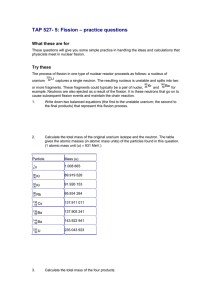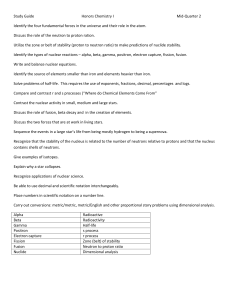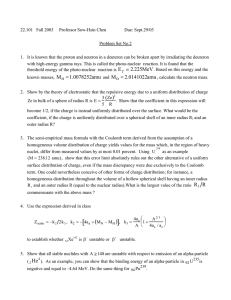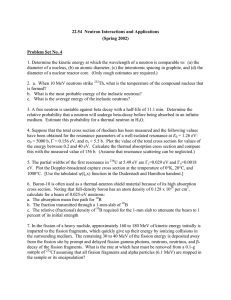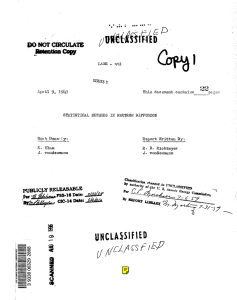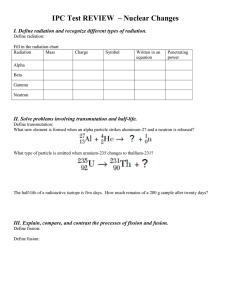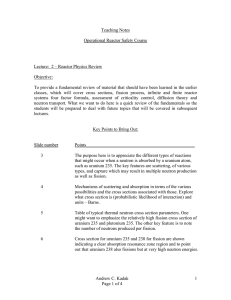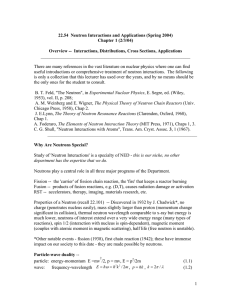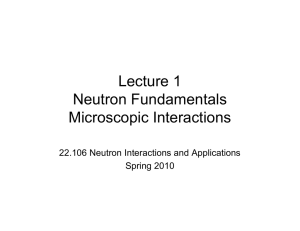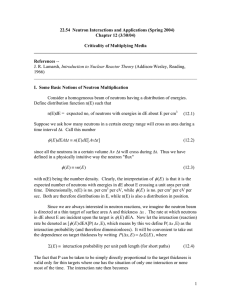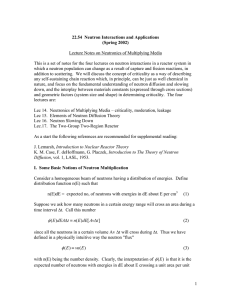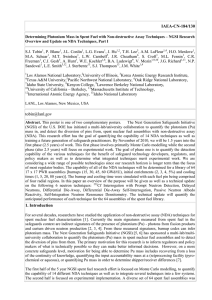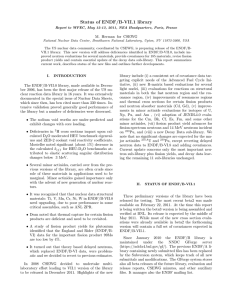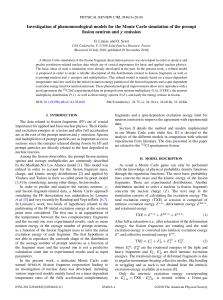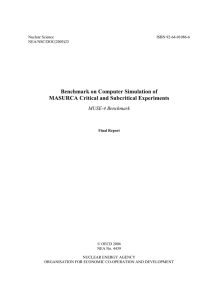(iii) Sample exam Questions:
advertisement
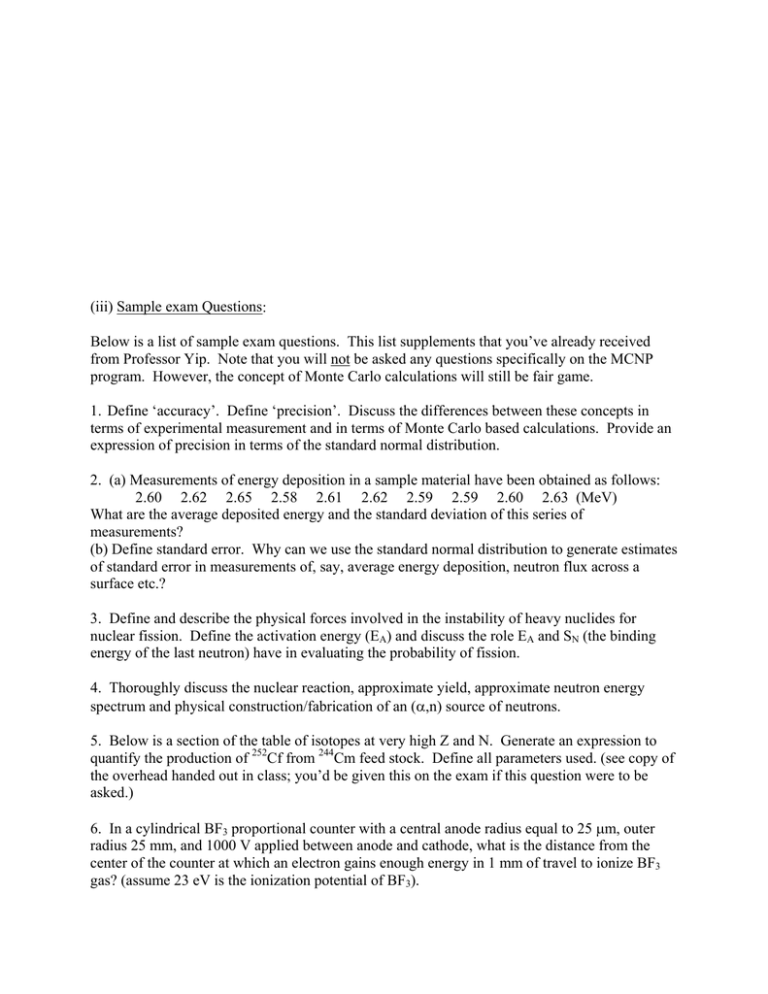
(iii) Sample exam Questions: Below is a list of sample exam questions. This list supplements that you’ve already received from Professor Yip. Note that you will not be asked any questions specifically on the MCNP program. However, the concept of Monte Carlo calculations will still be fair game. 1. Define ‘accuracy’. Define ‘precision’. Discuss the differences between these concepts in terms of experimental measurement and in terms of Monte Carlo based calculations. Provide an expression of precision in terms of the standard normal distribution. 2. (a) Measurements of energy deposition in a sample material have been obtained as follows: 2.60 2.62 2.65 2.58 2.61 2.62 2.59 2.59 2.60 2.63 (MeV) What are the average deposited energy and the standard deviation of this series of measurements? (b) Define standard error. Why can we use the standard normal distribution to generate estimates of standard error in measurements of, say, average energy deposition, neutron flux across a surface etc.? 3. Define and describe the physical forces involved in the instability of heavy nuclides for nuclear fission. Define the activation energy (EA) and discuss the role EA and SN (the binding energy of the last neutron) have in evaluating the probability of fission. 4. Thoroughly discuss the nuclear reaction, approximate yield, approximate neutron energy spectrum and physical construction/fabrication of an (α,n) source of neutrons. 5. Below is a section of the table of isotopes at very high Z and N. Generate an expression to quantify the production of 252Cf from 244Cm feed stock. Define all parameters used. (see copy of the overhead handed out in class; you’d be given this on the exam if this question were to be asked.) 6. In a cylindrical BF3 proportional counter with a central anode radius equal to 25 µm, outer radius 25 mm, and 1000 V applied between anode and cathode, what is the distance from the center of the counter at which an electron gains enough energy in 1 mm of travel to ionize BF3 gas? (assume 23 eV is the ionization potential of BF3). 7. Use order of magnitude arguments to show that a prompt neutron released in nuclear fission initiates a further nuclear fission in a time of about 10-12 seconds. A thermal neutron travels a distance of the order of 102 atomic diameters before initiating a fission. 8. The 9Be(p,n)9Be reaction has a negative reaction energy, Q= -1.851 MeV. What is the minimum kinetic energy (laboratory system) of protons that can make this reaction go? [Use integral masses.] Describe, in words, how you would estimate the neutron yield from this reaction. 9. A thermal neutron detector is placed at the center of a spherical moderator that is exposed to a source of 5 MeV neutrons. If the moderator diameter is varied while holding all other conditions constant, sketch the corresponding expected variation in the counting rate. Provide physical explanations for the behavior of this curve at both large and small diameters. 10. Show that the sensitivity of a neutron counter (eg. BF3 or fission counter) decreases with time as exp(-σaφt).
